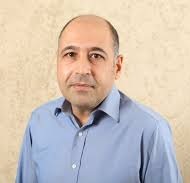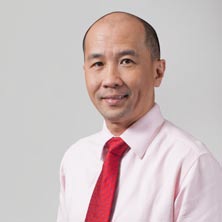Interview: APAC General Manager, Tropo: “While we are a small and agile organisation and can react fairly fast, that’s not enough. We need to have everyone along the delivery chain moving quickly.”

Tropo, an API that makes it simple to build phone, SMS and Instant messaging applications was picked as the winner of the Innovation Accelerator at the recent LTE Asia conference. In this interview with Fuxin Jiao-Kiuru, APAC General Manager for Tropo, we find out what the award means to them and why API development is so important in the telecoms space.
You won the Innovation Accelerator at LTE Asia. Why do you think your product attracted the attention of the judges?
Tropo bridges the gaps between telco and web development spaces, making fast innovation in communication possible. I believe the reason we won is that we are not only talking about great technology, but also real customers, real applications in the market, and real innovation and we bring in great value. In the region, both China Telecom and Globe Philippines are already using Tropo with their eco-system partners. So we are not just talking about it, we are innovating with our customers and partners as we speak.
What are the main challenges you expect to face over the next 12-18 months?


 Once again the great and the good in the Telecoms industry were present for the latest Telecoms.com awards, held for the first time at the Marina Bay Sands hotel in Singapore. After a cocktail reception filled with glitz and champagne the winners were finally revealed to an expectant audience. Well done to all the nominees and especially to the winners!
Once again the great and the good in the Telecoms industry were present for the latest Telecoms.com awards, held for the first time at the Marina Bay Sands hotel in Singapore. After a cocktail reception filled with glitz and champagne the winners were finally revealed to an expectant audience. Well done to all the nominees and especially to the winners!









 Roman Waditschatka, International Product Manager for Mobile Solutions, A1 Telekom Austria is speaking on the topic of “Creating a consistent customer experience when roaming,” taking place on Day Two of the 9th annual
Roman Waditschatka, International Product Manager for Mobile Solutions, A1 Telekom Austria is speaking on the topic of “Creating a consistent customer experience when roaming,” taking place on Day Two of the 9th annual 
 As you probably have noticed Apple, the company famous for making computers, among other things, did something remarkable yesterday. Yes, it killed off the ‘Classic’ iPod. You know the one with the click wheel and the 50 trillion songs on your pocket slogan. I know, I can hardly believe it either. This is a great shame of course, especially as I was thinking of upgrading my 2005 model as just last week my iTunes library exceeded its 60GB capacity for the first time meaning I can’t just hook it up and sync. Ah, cruel world.
As you probably have noticed Apple, the company famous for making computers, among other things, did something remarkable yesterday. Yes, it killed off the ‘Classic’ iPod. You know the one with the click wheel and the 50 trillion songs on your pocket slogan. I know, I can hardly believe it either. This is a great shame of course, especially as I was thinking of upgrading my 2005 model as just last week my iTunes library exceeded its 60GB capacity for the first time meaning I can’t just hook it up and sync. Ah, cruel world.





